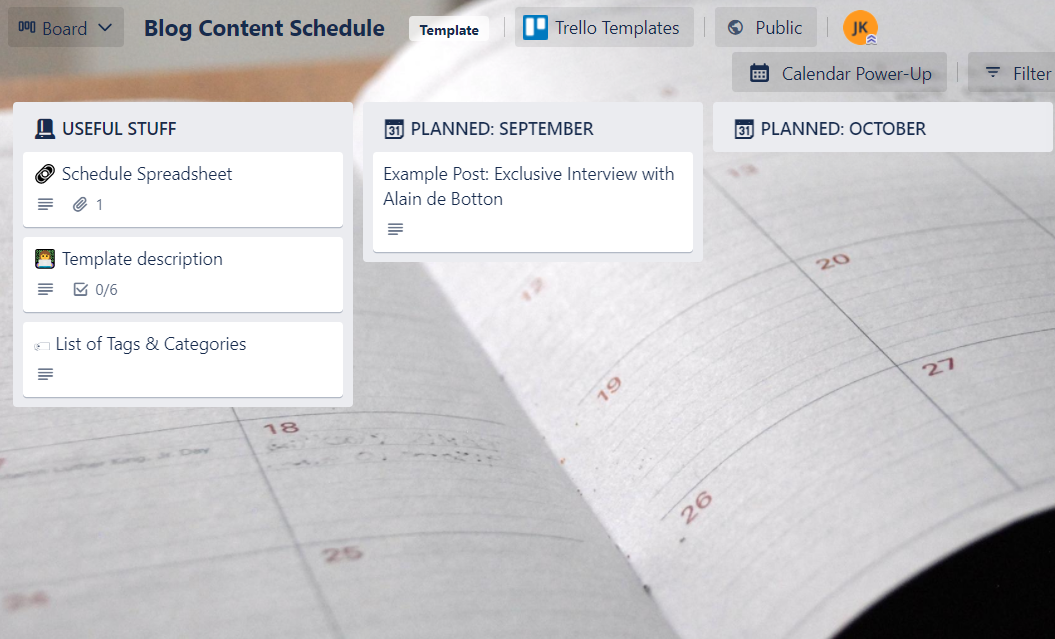Why you need an SEO content strategy
You may have heard: we write for people, not for search engines, and that works fine with us. Still, site owners often resort to SEO to find a driving force to move up in the search rankings.
Sometimes, you need a fresh look or inspiration for new content. Other times, you just need a spring cleaning on your website because your content is too muddled for customers to understand. A well-meditated SEO content strategy may spare you this headache in the future.
A good content strategy arranges jumbled pieces into a logical process where you
- Prioritize the most effective topics
- Set goals and tasks
- Assign writing roles
- Meet deadlines
- Measure the impact.
When you create content with SEO in mind, you will:
- Keep the technical part of your website in order and free from SEO errors that may dilute the authority (and thus impact online visibility), such as duplication and broken pages
- Review underperforming content and make it better
- Research your audience to better understand their needs, interests, and behavior
- Reach your customers on the best available channel
- Measure ROI and finetune the content strategy.
Content without SEO may cause businesses to miss out on a large number of leads and opportunities. On the flip side, SEO by itself should not be purely technical. SEOs should cross-check against data from other channels, including content writers, social media managers, and email.
The SEO content strategy sets out approximately on the following path:
1. Define SEO goals
At the start, you should decide how you’re going to measure SEO growth and how it corresponds to your marketing goals. Usually, companies use key performance indicators (KPIs) like organic traffic and conversions that can be tracked in Google Analytics. However, for interim evaluation, you may have smaller goals and metrics to estimate progress.
For example, if you want to expand to some geographic area, you’ll want to gain an audience from a specific region. You may also be interested in building a lasting relationship with your target audience, and that’s where the returning visitors will be the metric to observe.
The SEO approach is always keyword-focused. The metrics that help you measure the success of your SEO efforts are keyword ranking and visibility, estimated by any SEO tool.
Also Read: How To Build A Sustainable Marketing Strategy
2. Identify the target audience
Once you’ve formulated your unique selling proposition, you surely know your main buyer persona (or customer persona). Knowing the demographics of the buyer persona is really important for building a good rapport with them: age, gender, income, interests, and hobbies. Note all information that matters. If you already run a website, consult with Google Analytics to see who visits your website most.
Additionally, think of the second, third, fourth circle of people with whom your target audience communicates most often. Have a chart not only for your buyer persona but also for circle 1, circle 2, etc. Describe them the same way you’ve described your buyer persona.
For example, when we consider a local blog for teenage boys, a description for your target audience may go as follows:
| Buyer Persona | Persona 1 | Persona 2 | Persona 3 |
| Teenager | A Classmate/Friend | Parents | Siblings |
| Aged 12-17, boy, lives in town X, studies exact sciences to enter a college; hobbies: cycling, music, mountaineering… | Aged 12-17, boy, lives in town X, studies exact sciences to enter a college; hobbies: cycling, music, mountaineering… | Aged 35 – 50, live in town X, work at local business; celebrate family holidays; hobbies: sports, crafts, charity… | Aged 20, girl, moved to another town to study in a college; a rising TikTok star, hobbies: biology, pets, boyfriend… |
Also Read: How Your Customers Help Guide Your Product Messaging
3. Research topics and keywords
Surely, you know thousands of ways to generate content ideas. Brainstorm on a Sunday out with colleagues, check out Google Trends, or examine your online competitors.
Let’s get back again to the target audiences we’ve defined at Step 2. Have a chart for Buyer Persona, Persona 1, and so on, then take down topic ideas. At first, write down five-ten topic ideas for the buyer persona. Then, write down five-ten ideas that will be interesting for both the buyer persona AND Persona 1. Next, think of a few common topics for the buyer persona AND Persona 2. Topics should not repeat in different columns.
| Buyer Persona | Persona 1 | Persona 2 | Persona 3 |
| 10 Cool Spring Fashion Trends for Teenage Guys in 2022 | What To Do Summer Before Junior Year of High School | Why Do Teenagers Rebel? | 21 Things to Do When You Turn 21 (By a 21-Year-Old) |
| 12 Awesome Books I Read in 2021, Ranked | Should Teenage Guys Shave Their Mustache? | 20 Smart Things to Save Up For as a Teenager in 2022 | How to Start a Blog as a Teenager |
| 10 College Dorm Room Essentials for Guys | |||
| 16 DIY Gifts for College Students | |||
| 10 Cool Backpacks for Teenage Guys in 2022 |
Then, research SEO keywords that correspond to each topic and optimize your content with them. The quickest way is to find them in Google Autocomplete, although it’s more effective to research keywords with a Rank Tracker.
When you write a blog post for people, it will naturally contain some of the keywords. Embedding more SEO keywords into content will help boost the post visibility and draw more visitors from organic search. Just add SEO keywords to the title and meta description and structure the content for readability — all this will help your articles be more understandable to search engines and people will appreciate it as well.
Also Read: 7 Common Pitfalls Enterprises Make In Their Content Marketing Strategy
4. Create an editorial calendar
Based on the chart above, you can arrange your editorial calendar and assign writing tasks. There are plenty of awesome planners and content creation tools that will help you organize the workflow. Basically, you work out the plan by yourself based on periodicity, time of day, rate of response, and how you communicate with your audience about the content.

Refer again to your audience table. Major news for your blog will be based on column 1, which is about your buyer persona. This will make up around 60 – 80 % of your content. While the remaining 20 – 40% of your articles should be about topics from the other columns, involving the people with whom your target audience can discuss what you’ve written. That not only helps to grow the audience by sharing, but it also contributes to engagement with your visitors.
Listen To: How to Create Content People Remember
5. Map keywords to customer journey stages
A keyword is a query by which a visitor finds your article in the organic search. Showing up on page one at the top may draw hundreds of visitors per day. However, the crucial part of effective optimization is the intent with which a user is looking for some particular query. There are three main types of keyword intent:
- Informational — the searcher wants to find out something for the sake of knowing it, the reason behind the search is vague (e.g. what is);
- Investigational — the searcher wants to learn more about the subject (e.g. how to);
- Transactional — the searcher may perform a purchase (or some other meaningful action) when finding the right thing (e.g. top x, best y near me).

Depending on the type of intent, you will need to create different types of pages and optimize them for different kinds of keywords. These are
- blog posts for informational keywords,
- how-tos or long-reads for investigational intent,
- service pages or product pages for transactional keywords.
6. Map keywords to landing pages and goals
As you build your pages and improve the content structure, you will see which pages need improvement and which pages underperform. You can track your landing pages and set goals in Google Analytics for measuring the success of the pages — the CTR, the traffic coming from the most profitable keywords, and conversions performed.

7. Plan outreach activities to get mentions
Getting a post published is only half of the work. The success of a story comes within the first few days. Although user engagement is not a named Google ranking factor, shares, likes, and discussions show that the blog post offers value to people. Share on social media, ask partner blogs to spread the word about your story. The more backlinks and mentions your post gets, the better it is for its ranking on Google.
Also Read: 7 COVID Marketing Trends B2B Companies Need to Know
8. Repackage content
Think if you can create another form for the content you have. How else can you deliver value to your visitors, using other platforms and channels? For example:
- Create a long read with stunning images and distribute it on a story-telling platform
- Make a video for YouTube /a podcast channel (it may be resource-consuming to produce, but successful pieces pay off lavishly)
- Create a downloadable checklist/infographic and distribute it on respective platforms
- Create a newsletter and email the essentials.
9. Update evergreen content
Some stories may last for years. Sometimes, an unexpected turn of a story may urge people to browse the archives. Don’t waste your content, but recirculate it.
First of all, if the evergreen content contains outdated information, make it up-to-date and discuss how things have changed.
Second, you should build the reputation of a high-quality resource and provide deep expertise in the subject matter. E-A-T (Expertise, Authoritativeness, Trustworthiness) is the ingredient that helps Google figure out which is which. Expand topics, go in-depth, create timelines, and explore more on the topic if you see that your audience is really keen on some issue.
And last, but not least, a good site structure, easy navigation, logical, memorable categories, and reading suggestions will make your visitors want to stay on your site longer. Link your articles carefully, organize pages so that all of them are easily found, and try to keep your visitors from leaving after reading only one page.
10. Track your SEO content KPIs
Calculating ROI on your SEO content can be a bit of a challenge. Each piece of content you create has the potential to bring benefits for years ahead. It’s crucial to track changes that happen on your website from the moment you publish your content and when you make improvements to it.
Track the following KPIs:
- Keyword rankings
- Organic traffic
- Conversions on pages.
SEO isn’t an exact science
One of the most difficult things about SEO is that it’s not exact. Search engines don’t have transparent algorithms, so most SEO guidance is educated guesswork. And even then, Google is always releasing algorithm updates that change SEO ranking factors. Because of this, you may have to tweak your strategy often to get the results you want.
Read Next: Enterprise Search Engine Optimization Tools
Tatsiana is a writer for SEO PowerSuite with 5+ years of experience in Digital Marketing, with a focus on Copywriting, Website Editing, Link-Building Outreach & PR.





